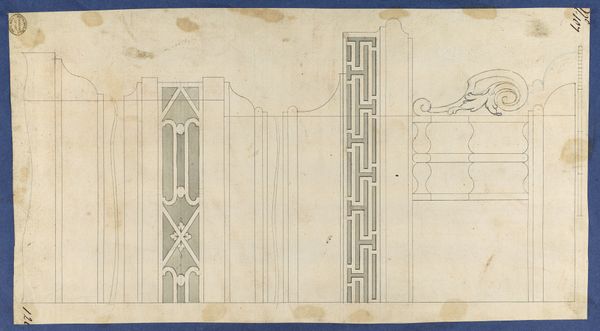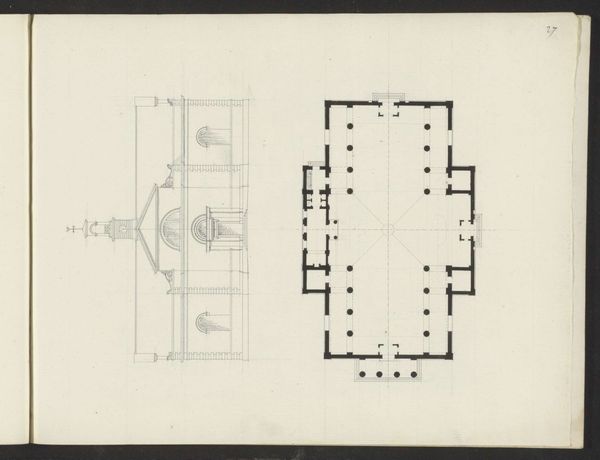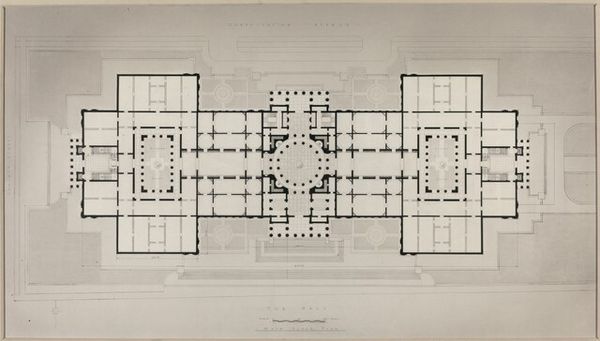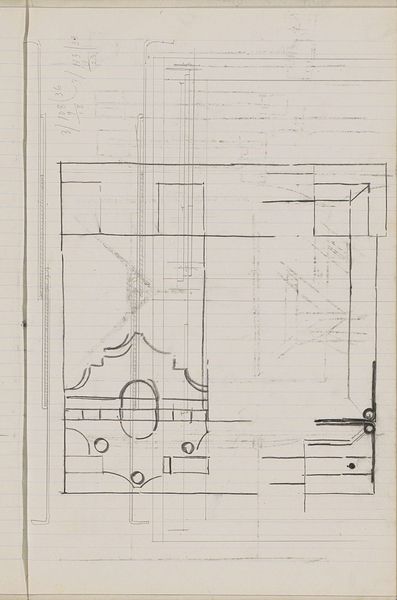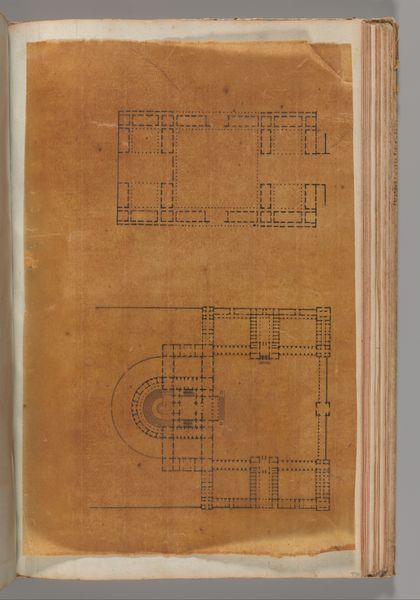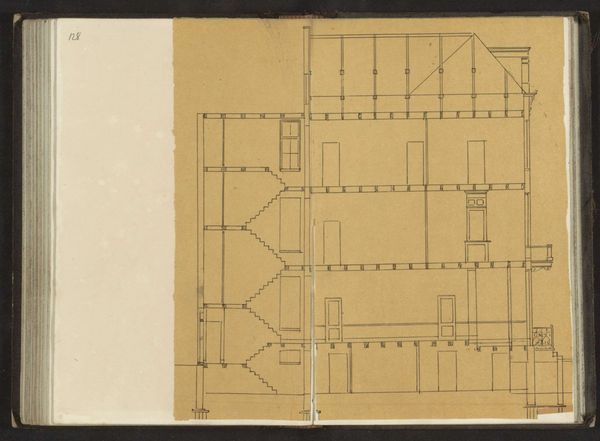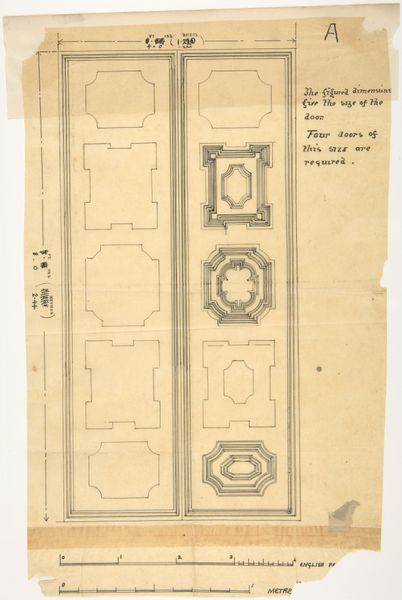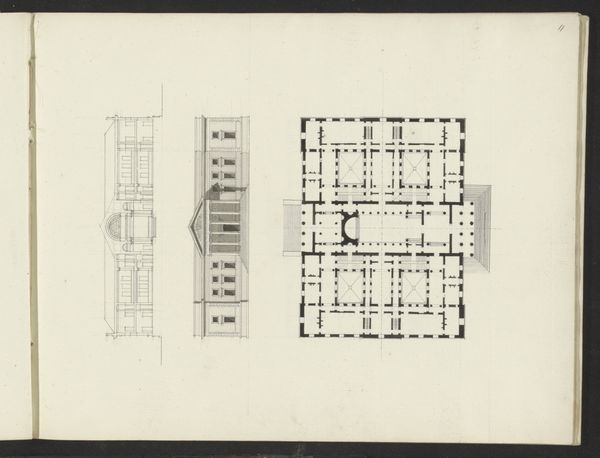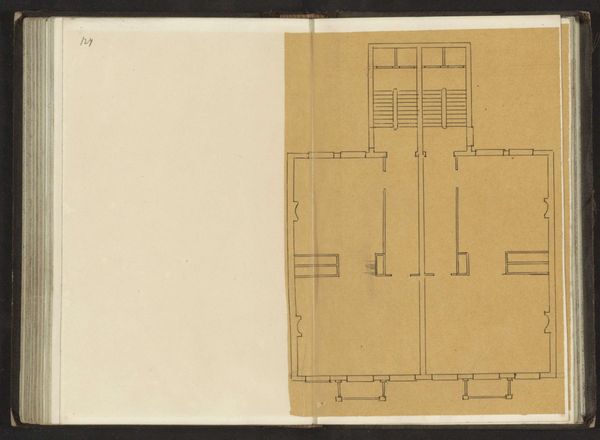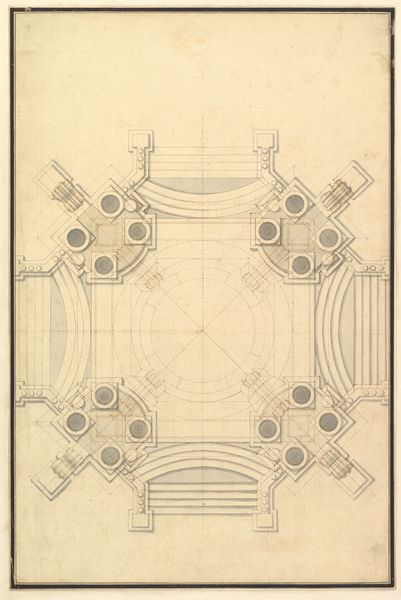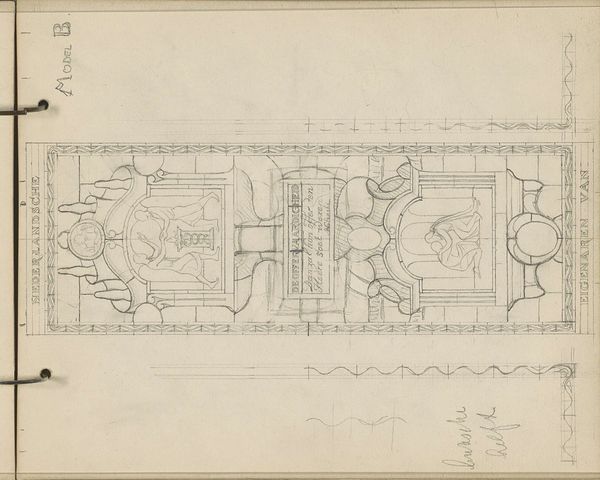
Drawing No. 3- Elevations of Foyer to Auditorium 22 - 1930
0:00
0:00
drawing, print, architecture
#
drawing
# print
#
geometric
#
united-states
#
line
#
architecture
Dimensions: 18 3/4 x 33 5/8in. (47.6 x 85.4cm)
Copyright: No Copyright - United States
Editor: Here we have "Drawing No. 3 - Elevations of Foyer to Auditorium" by William Channing Whitney, dated 1930. It appears to be a print of an architectural drawing, and I’m immediately struck by its very technical and precise nature. The blue hues are really calming. What do you see in this piece, from a historical perspective? Curator: What strikes me is the drawing's inherent connection to a specific time and social context. We’re looking at an architectural drawing of a public space – a foyer and auditorium. Think about the role of auditoriums in the 1930s: places for civic engagement, cultural events, shared experiences. Architectural drawings like this reveal societal priorities. How does it make you think about access to culture in that era? Editor: It's fascinating to think of the auditorium as a hub of community activity. Considering the economic hardships of the Depression, were these kinds of spaces seen as vital for public morale? Curator: Precisely. The very act of planning and constructing such a space signals an investment in the future and a belief in the power of shared experience. Moreover, who had access to these spaces, and whose voices were amplified within them? These are crucial questions to consider when interpreting a drawing like this. Editor: So, even a seemingly straightforward architectural drawing can offer insights into the social and political landscape of its time. It's less about the building itself and more about what that building represented to society. Curator: Exactly! Think of the museum that now holds the work: how its very existence shapes the interpretation and the ongoing narrative around Whitney and this specific period of artistic expression. Editor: I never would have considered the drawing to reflect so much about social class at the time. Thanks for the perspective. Curator: Likewise. Considering this art through a social, cultural, and historical lens truly reveals much about our past and how we've come to regard and access public spaces.
Comments
No comments
Be the first to comment and join the conversation on the ultimate creative platform.

